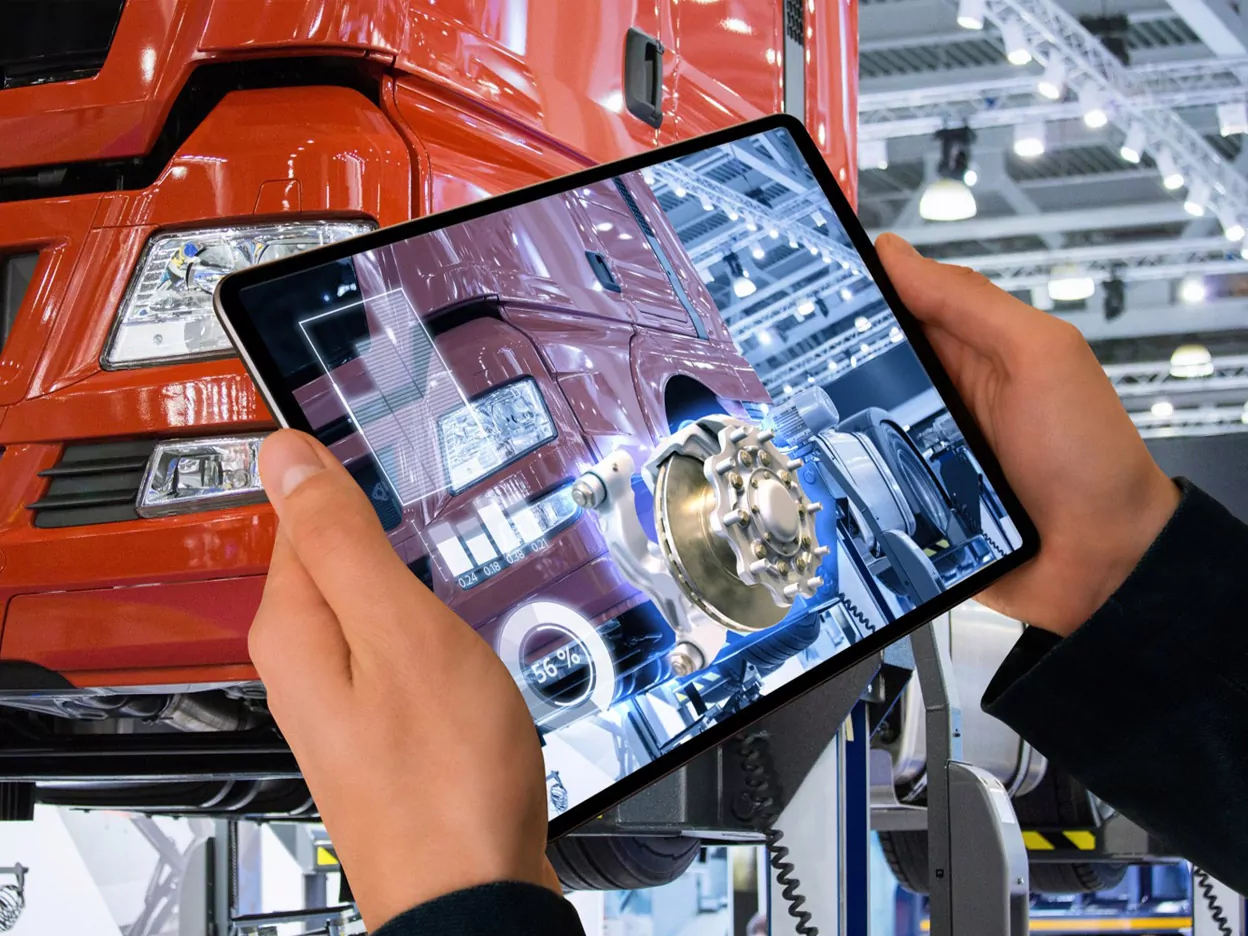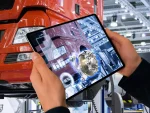the content authoring tool for digital learning
The market for digital learning has not just been experiencing an upswing since the pandemic. Turnover has increased by €35.28 billion worldwide since 2017 - particularly in the B2B sector. Companies are one of the largest target groups for digital knowledge transfer and e-learning. They need to be regularly updating their employees or making content available to them - for example, by training regularly for updates or guaranteeing good onboarding in sectors with high staff turnover. Authoring tools make it really easy to create learning content in-house. However, they are usually designed for the desktop.
Those who want to extend their knowledge are sitting in training rooms or in an office and have a screen in front of them. Many studies show that the learning effect is lower here than through interactive or spatial appropriation. Moreover, the majority of employees often now tend to be among the “deskless workers” - i.e. they’re not sitting in front of a screen. The heating engineer or the safety technician, for example, are standing in front of machines during construction or maintenance and are needing specific information. It’s rarely the case that the complete documentation is available on site. Even employees in system catering, who are often exposed to a high stress level, won’t then be logging on to the Intranet to look up the necessary instructions when preparing food or maintaining kitchen machines.
A simple e-learning solution for B2B
The Potsdam-based company Interlake has now developed Nextcreate which is a tool that can be used directly with smartphones, tablets or even VR glasses for digital enhancement at the point of need and accessed for the different phases of work. “We want to make such topics available to the general public. And software doesn’t solve the problems, it’s just an enabler,” says Sven Slazenger, CEO and founder of Interlake. “Put simply, we were looking for a solution to transport information from A to B. Available to download on such target devices as tablets and mobile phones that everybody has at their disposal and, on the other hand, so easy to use that everybody who knows Outlook can work with it. We’re empowering those in charge to be able to create the content themselves in a very simple way.”
Interlake had already been providing digital learning solutions before selling its Interlake Learning subsidiary and it had also been working as an exclusive partner with Articulate, the global provider of a 360-degree storyline tool. The division was sold last year so that the company could concentrate on the core business of Microsoft Cloud Technologies. But after customers repeatedly approached Interlake with requests for an easy-to-use and desktop-independent application, the company then began developing an AR authoring tool that does not require high-end devices and can be used on serial ports.
None of this is really that new: there are several 3D authoring tools now in the field of augmented reality - but these then have to be kitted out with 3D elements. To date, very few companies have had the corresponding content at their disposal. This is because three-dimensional content involves considerable investment in time and money. What everyone has, on the other hand, is text information, images, data or videos. Interlake’s declared objective is to produce a software for these needs that does without a “support nightmare”, Slazenger says. “Our tool enhances reality with digital information in certain places.” As a developer, Interlake can’t be compared with start-ups who attract large investment and can quickly turnaround production thanks to high expenditure. Instead, it only invests from its own resources, works in close tandem with clients and through tried and trusted distribution channels
Digital anchor points in the room are used to retrieve the necessary information
An important project was a precursor for Nextcreate when the company collaborated with the artist Sarah Settgast and the musician Rolf Zuckowski on the creation of an interactive children’s book with AR elements and an accompanying app. Anyone leafing through the book with a mobile device and app will hear the associated songs being played and texts displayed - the corresponding pages are very simply recognised using the photo function. Interlake CEO Sven Slazenger, who was involved in this project as a business partner on the publishing side, also established the contact with Volucap who then delivered lifelike miniature holograms of Zuckowski and Settgast in its volumetric studio. A statistical evaluation in the background showed that about 400 different mobile devices accessed children’s book’s AR function - and, on each occasion, the application worked without a hitch.
The first beta version of Nextcreate is based on the same principle and offers a browser-based authoring tool that anyone can use to upload images, videos and texts. Digital anchors recognising the programme are needed in order to ensure that everything is played out directly at the point of need. Interlake uses spatial anchors alongside QR codes to recognise and access the desired information. Those who think further and actually want to create content for the metaverse or 3D environments can also use Nextcreate. However, the providers will need the corresponding elements to be able to do this.
Interlake is currently focusing with Nextcreate on the field of B2B e-learning since established contacts and distribution structures are already in place here. Working on test phases with a manufacturer of agricultural machinery has enabled Nextcreate to make maintenance documentation available to those directly operating the machines. A car manufacturer, a large bakery and a system catering company also number among the beta testers.
The fields of the arts or tourism are also areas where application scenarios could be applied. Additional information can be made available, for example, by using digital extension without spoiling the exhibition’s visual concept.
Nextcreate will move from closed beta to public beta next month. Interested companies are welcome to attend by invitation.
Image Credit: Interlake/Nextcreate
About MTH Blog
The media technologies of the future are already being used today – not only in the entertainment sector, but also in a wide variety of industries. Christine Lentz meets up with tech enthusiasts, established companies and researchers for our monthly MediaTech Hub Potsdam blog to tell the stories behind the innovative business models.



